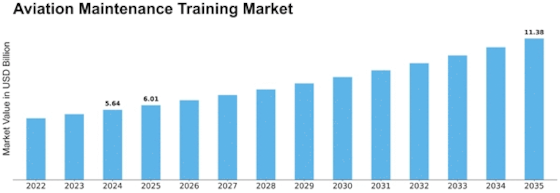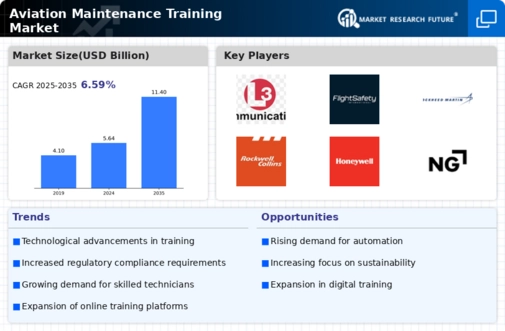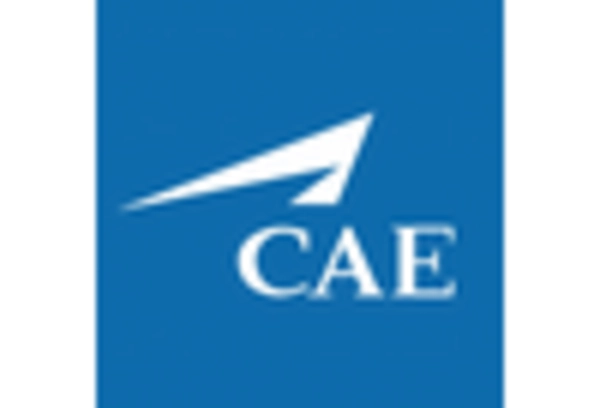Aviation Maintenance Training Size
Aviation Maintenance Training Market Growth Projections and Opportunities
Training in aviation maintenance is growing because of a number of factors that affect aircraft maintenance education. One major factor is the rising need for trained aviation maintenance workers to serve the airline industry around the world. As the number of planes increases, so does the need for workers with the right training to keep the fleet safe. Because experienced workers are retiring and modern airplane systems are so complicated, there needs to be a steady flow of skilled staff. The field that trains people to maintain airplanes is affected by government rules and industry standards. The Federal Flight Administration (FAA) and the European Aviation Safety Agency (EASA) have strict rules for flight maintenance training classes. These standards must be followed by training companies to make sure that graduates can get licenses to work on airplanes. For aviation maintenance training to be valid and useful, it needs to keep up with changing government rules.
AR and VR are being used in flight training classes as they become more digital. These technologies make models and hands-on lessons more realistic for students to learn how to do maintenance tasks. Using digital tools in training helps people learn faster and get ready for working with complicated flight systems.
The global nature of the airline business affects how the market works because it trains people from many countries. Internationally, flight groups and training companies work together to share information and make training more consistent. For schools to get more international students and make it easier for graduates to find jobs, their training programs need to meet global standards.
The flight maintenance training market is affected by economic factors such as the growth of the aviation industry and the need for training that is both effective and affordable. As planes and maintenance companies try to cut costs, training programs are getting better at what they do. People like online and remote learning because it gives them more freedom and doesn't require as much equipment. Because of the economy, training companies in the field of aviation maintenance must find a balance between cost and quality.


















Leave a Comment